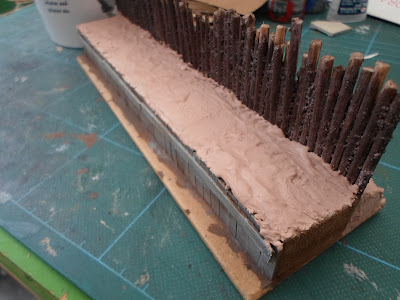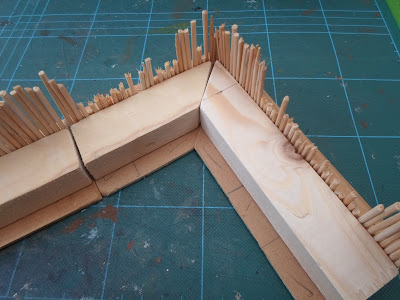Another week at work over and time for another post!
Last time out, I introduced you to my fictional British hero, Major-General Sir Cheslyn Hay, who will, on Sunday 8th July, be leading his forces into battle against those dastardly Frenchies in the Relief of Fort Nummanmason at the Barrage Show in Stafford. The venue is Blessed William Howard High School, which will be masquerading as somewhere in New France for the purposes of our game!
Well, every hero needs an (anti-) hero, so I present for you the Chevalier Gaillardhomme, Sieur de Grand-Werly. This worthy will be leading the aforementioned dastardly Frenchies in the encounter outside the walls of Fort Nummanmason, and keen to give the upstart Roastbeefs a good lesson in humiliation.
Now, no history or other book will enlighten you on the careers or activities of either of these men, as they are both created by yours truly, but a brief scan f a map of South Staffordshire will yield the adjacent villages of Cheslyn Hay (boo!) and Great Wyrley (hurrah!). Curiously, Occasional Wargamer Brother Kev lives in Cheslyn Hay (boo!), along with his family, which includes Occasional Wargamer Nephew Ben. Guess which role one of these two will be getting!
Your worthy scribe lives in Great Wyrley (hurrah!) and "Gaillardhomme" just happens to be a direct translation into French of his surname. Hm. Guess which role I have bagsed!
Anyway, the Chevalier is an Eagle Figures product painted, as always, by yours truly, and the forthcoming affair at Fort Nummanmason will also be his first outing as he aims to uphold local village honour (not to mention staving off eventual French defeat in and loss of Canada).
Every great man needs an aide, however, so a Dixon Miniatures French officer will masquerade as that aide, his name as yet to be confirmed, but it will be something vaguely humorous along the lines of General de Brigade du Bious, Colonel Sacre-Bleu, Major Zut-Alors, Colonel de la Catessen, General de Meanor or similar.
Hope to see at least some of you at Barrage. Come over and say "Hello!"
G
 |
| The aide. As Dixon Miniatures are smaller than most of my FIW stock, this diminutive fellow got to stand on a rock, similar to some of his British counterparts from the same stable. |































